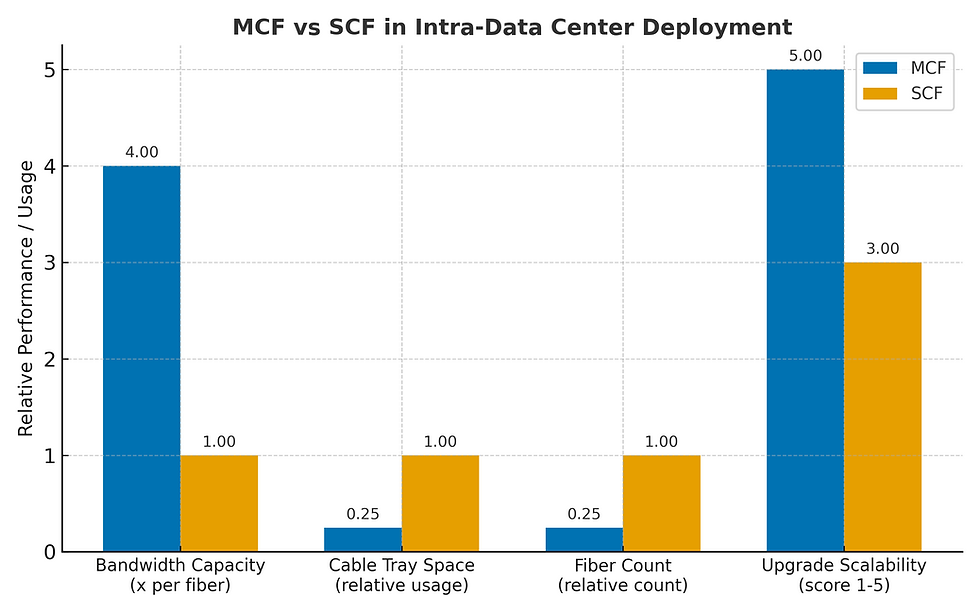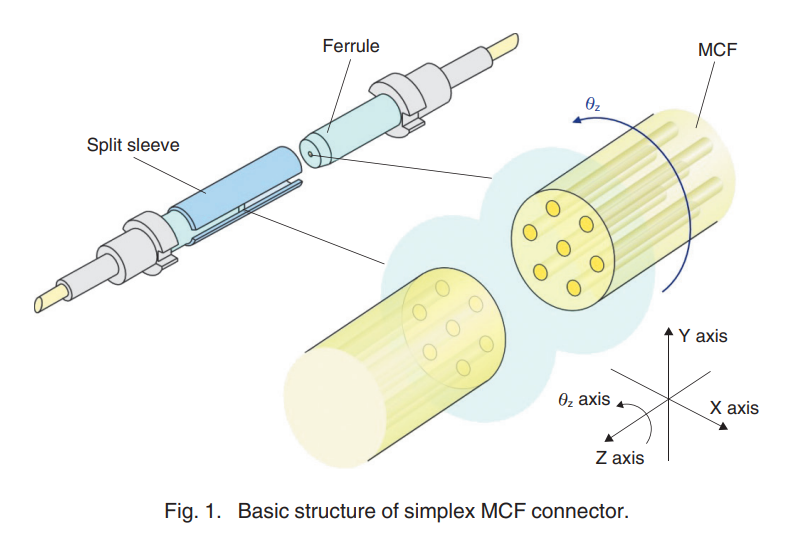Why Multi-Core Fiber Could Be a Practical Path to Scaling Hyperscale DC Capacity
- Hieu Bui
- Aug 13
- 3 min read
Intra-data center cabling is approaching its limits.
In many hyperscale data halls, cable trays are already full, ducts have no remaining space, and dense cable bundles make airflow—and future upgrades—more difficult.
Traditional methods for increasing capacity, such as adding more single-core fibers (SCF) or installing additional ducts, can be costly, disruptive, and sometimes physically unfeasible in high-density environments.
Multi-Core Fiber (MCF) is an optical technology under active development and early deployment that could significantly increase capacity without requiring additional duct space.
The Challenge: Limited Duct Space
Data traffic inside hyperscale and AI-focused data centers continues to grow rapidly. Modern AI clusters, often with hundreds of GPUs, demand high east–west bandwidth, which can require multiple fibers per link to keep up.
As fiber counts grow:
Cable trays reach capacity.
Adding ducts involves significant construction and downtime.
Large bundles can restrict airflow, increasing cooling costs.
Towards Higher Density: Multiple Cores in One Fiber
MCF technology places multiple independent optical cores inside a single standard-diameter fiber.
A 4-core MCF can carry up to 4× the bandwidth of a single-core fiber — within the same 125 µm cladding.
Replacing four single-core trunks with one 4-core MCF can reduce total fiber count by as much as 75%.
Fewer physical fibers mean less congestion, simpler routing, and cleaner racks.
Advantages of MCF Inside the Data Center
The diagram below provides a side-by-side comparison of Multi-Core Fiber (MCF) and traditional Single-Core Fiber (SCF) across several key performance and operational factors.

Higher Bandwidth Density
Lab demonstrations, such as those by OFS, have shown that an 8-core fiber can carry 8×100 Gb/s = 800 Gb/s over 2 km — performance that would require eight separate SMFs in a typical setup.
This indicates that MCF could deliver higher throughput without altering existing duct or tray layouts.
Smaller Fiber Footprint, Easier Management
Reducing fiber counts can:
Lower the number of connectors and patch panels.
Simplify labeling and documentation.
Decrease potential points of failure.
In a network with 10,000 links, moving from SCF to 4-core MCF could reduce fiber usage by about 75%, freeing up space and simplifying operations.
Possible Cost Efficiencies
While MCF components may have higher initial unit costs, savings may be realized over time through:
Lower glass cost per delivered core.
Fewer connectors, patch panels, and transceivers.
The potential to integrate multiple channels into a single multi-core transceiver — an emerging capability in near-future deployments.
Energy and Cooling Benefits
Consolidating optics into fewer fibers may help reduce:
Redundant circuitry.
Cooling loads (shared TECs for multiple cores).
Overall active equipment requirements.
Even modest improvements in efficiency can have measurable impact at hyperscale.
Alignment with AI & HPC Needs
For high-performance fabrics, MCF is seen as a future-ready option to:
Combine multiple standard lanes (100G/200G) into a single multi-core fiber for terabit-scale links.
Avoid the need to wait for extremely high single-channel speeds.
Align with emerging silicon photonics packaging approaches.
Summary
For operators facing space and capacity constraints, MCF offers a potential path to increasing bandwidth within existing infrastructure:
No additional ducts or large-scale construction.
Incremental capacity gains that align with long-term scaling needs.
A possible step toward cleaner, more efficient network architecture.
To explore the full research and data behind these points, read our Whitepaper: High Density Fiber Connectivity for Hyperscale Data Centers



Comments